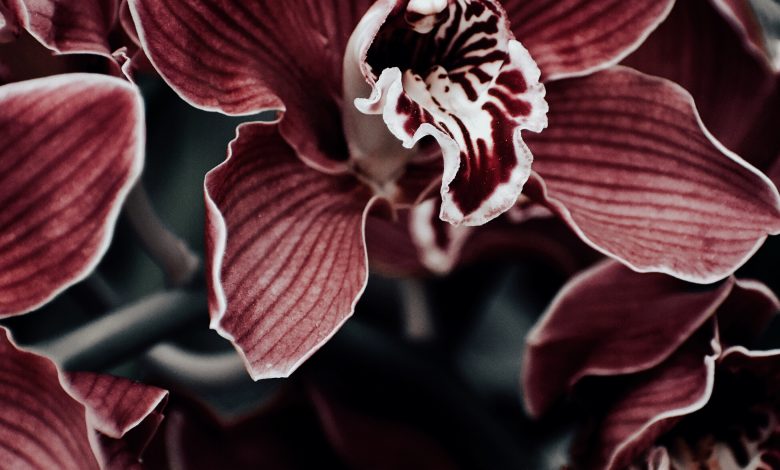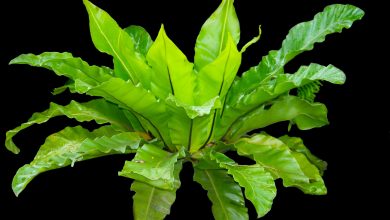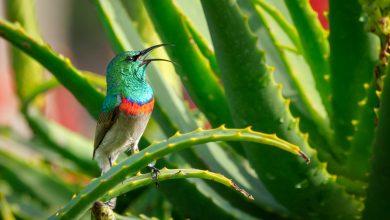Unusual Plants To Grow In Your Garden

Year after year, you tend to grow the exact same things in your garden, and you’re likely ready for a change. In this post, we’ve put together a list of vegetables and flowers that could give your garden an edge that’ll make other people’s jaws drop and have their heads turning. Growing anything on this list could be an adventure perfectly fit for the advanced gardener.
We often limit ourselves to things that feel comfortable and familiar, preventing us from experiencing new things in life. Taking a risk to grow fresh and unfamiliar garden varieties could be the push that you need to get out of your shell.
Without any further delay, let’s dive right into our list of the coolest, interesting, and unusual plants that you can grow in your garden!

Amaranth
Amaranth definitely falls under the category of interesting. And it also falls under the category of being a grain, a veggie, and a weed all at once! Two different nutritious foods are made from amaranth, although it’s currently uncommon to see people eating a lot of it. It turns out both the greens and its seeds, which can be used as a grain, are edible. The greens are comparable to spinach or kale, and the seeds are quite similar to quinoa and can be broken down into a flour for baking. Both aspects of the plant are full of protein and micronutrients, making for an incredible addition to both your garden and your diet.
You have a short window of opportunity when it comes to growing amaranth, as it’s considered to be a summer crop. Because of its reliance on warm sunny weather, it grows best in zone 7 and up. Although amaranth relies on hot temperatures, you can potentially grow it between zones 2 – 11, given optimal conditions. Getting the perfect timing down year after year takes a little bit of guesswork. If you sow it in late May or early June, keep an eye on the temperature, as the soil temperature that’s best for planting this wonder-crop is between 65 – 75 degrees Fahrenheit.
You may harvest amaranth’s greens throughout its flowering season, and when it goes to seed towards the end of the summer, you may reap its grain. To harvest the baby greens or mature greens, just cut them off with a pair of scissors. To collect amaranth seeds, find a pan or a bucket suitable for collection and gently rub your hands over the flowers from bottom to top to push the seeds off of the flowers.

Cucamelon
Cucamelon is exactly what it sounds like. Cucumbers are also technically a melon, and there happens to be a melon that looks like it would be a hybrid of both a cucumber and a watermelon all in one. Cucamelons look just like miniature watermelons and are known to have a slightly sour or tangy taste and texture that lands between that of a lime and a cucumber. When you cut into cucamelon, you’ll be presented with a bright, watery, and green color and a decoration of seeds running down the center, which you may want to save for next season.
These cute little treats need to stay warm for several months, so they’re best grown in zone 9 or warmer and may need some assistance in colder areas. Typically you would plant a cucamelon in the late spring. This is because it won’t yield a crop until the hot months of the summer due to the fact that they usually take up to 75 days to grow after germination. The key to successfully growing these melons is our beloved hot summer sun and some nutrient-rich, conditioned soil.
Because cucamelons are often in short supply, you may want to set a few of your harvested cucamelons aside to extract the seeds. After letting a few melons ripen, you’ll need to cut open your melon and scoop out the seeds, placing them in a container with some water and without pulling any of its protective gel coatings off. You’ll need to give your seeds about three days to ferment, and don’t worry if mold begins to form. Any of the seeds that will be usable for the next growing season will sink to the bottom of the container. Just rinse them and then let them dry out before storing them.

Kiwano
The kiwano is a melon that would likely resemble some kind of exotic fruit you would see eaten in a science fiction movie or a culinary TV series. The outside of a kiwano is orange and spiky, and its center is green and juicy, with a jelly cucumber-like flavor that carries a slight hint of banana. Some people would suggest its character is somewhat ‘tart’ and comparable to lime or kiwi. It’s safe to say this is one of the most bizarre-looking plants that you could grow in your garden.
Kiwano is naturally cultivated in the sweltering hot climates of Central and South Africa. More recently, it’s seen some love in the United States being cultivated in hardiness zones 10 and above. Like most melons, you’ll need to use a nutrient-dense and slightly acidic soil, which you can attain through the use of good homemade compost or soil conditioner.
It’s also beneficial if you have any experience with hydroponics, as kiwano needs a lot of water to stay well-hydrated.

Purple Cauliflower
Cauliflower is often a staple in a vegetable garden if you ever plan on growing cruciferous veggies. Instead of the usual variety, you might consider cultivating some purple cauliflower, which is surprisingly considered to be an heirloom variety. Heirlooms can be a fun (and often colorful) addition to your garden when you’re growing cruciferous veggies or root veggies. The pigment that gives it that vibrant purple is also rich in antioxidants, which makes an excellent addition to your diet.
If you have grown an heirloom vegetable before, you likely already know that they’re incredibly easy to grow, are resistant to insects, and should be planted in late spring. Purple cauliflower also thrives in the same hardiness zones of 2 – 11 like its standard white counterpart. Though, it does require incredibly fertile soil and nearly endless amounts of water. And you’ll also need to be on-top of adding compost to your crop and daily watering to make sure it stays as healthy as it could possibly be while it grows.
Typically you should try to cut out as much of the flower as you plan on eating, and towards the end of the summer, wait for the rest of the flower to shoot up so it can go to seed. Interestingly, at the end of the flowering phase, cauliflower will go to seed through small green bean-like pods. If you want to collect some of the seeds to save for next season, the process is pretty straightforward. When the pods transition to a brown color and get close to opening, you’ll need to remove them from the plant and collect the little black seeds inside.

Achocha
Achocha is yet another exciting melon on our list of interesting and unusual plants to grow. When its younger, it often tastes like a cucumber, while a fully ripe achocha will taste similar to a dash of bell pepper when added to your favorite food. Overall, it can be incredibly fun to grow in your garden. However, it takes quite a bit of space, as it grows similarly to a creeping vine, though, this does make it great for a vertical gardening project where you can let it creep over your patio using pergolas.
Despite its potential for being cultivated, because of its invasive nature, it’s considered as being a pest in certain parts of Florida. One of the exciting parts of this plant is that several varieties of them explode. Gently flick them while they’re still on a vine, and they’ll instantaneously pop open, resembling a banana peel pulled open in several directions.
They are actually substantially more straightforward to grow than other melons because of the fact that achocha has quite a bit of natural resiliency. Achocha will grow in virtually any type of well-drained soil, and typically only needs to be watered when it appears to be thirsty. You actually won’t need to do much maintenance with these plants – just plant them and leave them to their own devices.
Collecting the seeds is also as simple as pulling out its core, which will be covered in enlarged black seeds resembling small arrowheads. But keep in mind that the seeds can only be found in fully mature fruit.

Dwarf Powderpuff
The Dwarf Powderpuff grows wild and is native to Mexico, as well as several Central American countries. The flowers form a mesmerizing round cluster that looks like a vibrant explosion of red and pink petals. This plant is often added to gardens as an attraction to pollinators like bees and butterflies, stimulating healthy growth throughout the rest of your plot. Unfortunately, this plant only thrives in hot climates, and it would take an excessive amount of care to cultivate them in colder zones.
The Dwarf Powderpuff thrives in the hardiness zone 9 – 11 and will quickly die off or disappear if it’s exposed to temperatures colder than 40 degrees Fahrenheit. This plant is also technically a tree, so it will take at least a year before it begins to mature. It should be planted in loamy, well-drained soil where it will receive full sun with humidity of 50 percent or higher. Regular pruning is needed as it nears maturity and during its flowering season to increase the number of flowers that end up blooming. This is also useful to control the shape of the tree while it grows.

Purple Lacy Fiddleneck Flowers
The purple lacy fiddleneck might remind you of some of the oceanic life-forms that you may see in a saltwater aquarium. In fact, it wouldn’t be unfair to say that it looks like a sea snail or a seahorse because of the intricately rounded shape it bears, which also gives it its name. The purple lacy fiddleneck flower might surprise you with just how much its aroma resembles the smell of freshly washed grapes. As it blooms, the flowers will start off in a spiral shape, only to unfold into a gorgeous and intricate array of beauty. It’s also a great choice if you’re looking for a flower that will cover a lot of garden space, as the purple lacy fiddleneck grows similarly to a carpeting plant.
The purple lacy fiddleneck is an incredibly low-maintenance plant that is native to the Southwest United States and Northern Mexico. It grows well in virtually any hardiness zone given that it receives the right care. Although the purple lacy fiddleneck is considered to be an annual, it’s closer to a perennial in terms of how it seeds. If you’re thinking of adding this flower to your plot, keep in mind that it should be planted in loamy, acidic to neutral, well-drained soil. But besides these few initial requirements, it really doesn’t take much involvement on your end to keep it growing. The only maintenance you will have to do is prune it occasionally to stop it from taking over your entire garden.

Showy Milkweed
Showy milkweed is an important plant in the current effort to conserve the lives of monarch butterflies. Although you may want to protect your beautiful flowers, showy milkweed often provides food to monarch caterpillars after their eggs have hatched. These flowers are incredibly rich in nectar and will draw in other pollinators such as hummingbirds, making it one of the environmentally-impactful plants you could add to your garden. Meanwhile, as a gardener, you will absolutely love the showy milkweed’s vibrant and well-pronounced light pink to purple flowers.
Its native habitat lies in the Eastern-Central United States and Western Canada. It also grows incredibly well in the hardiness zones 4 – 9 and can be grown in dry sandy conditions or in well-drained garden soil where it prefers full sun exposure.
At the tail end of the showy milkweed’s growing cycle, it should yield seeds within 7 to 35 days, which can easily be collected by clipping the seeds from the stem and gently pushing them off their flowers into a bucket or small container.

Danish Flag Poppy
The Danish flag poppy is what it sounds like. It’s a poppy with an uncanny resemblance to the flag of Denmark. This flower is guaranteed to turn heads when people notice its pattern, and its bold red color will always be an immediate attention grabber, especially when it’s in full bloom.
Planting a group Danish flag poppies is a great way to add a massive burst of color to your garden. Unfortunately, this poppy is an opium yielding variant. This means that it cannot be shipped to or purchased in several countries. Albeit, if you did get ahold of some seeds, they aren’t necessarily illegal to grow. So it’s no surprise that their seeds are highly sought after by many gardeners due to their immense value as ornamental plants.
Danish flag poppy grows incredibly well in hardiness zones 3 – 9 in either full sun or partial shade. They prefer rich, moist, well-drained soil where it takes them roughly 14 weeks to grow from seedlings to full bloom.

Rare Orchids
Now since we’re talking about unique and almost obscure plants, rare orchids definitely deserve a spot on this list. They check off both qualifiers quite well, and on top of that, they’re also incredibly difficult to grow and propagate. If you happen to have an excess of money to spend on your garden, you might be interested in purchasing a ghost orchid from Florida, or a Rothschild’s slipper orchid native to a single particular region of Malaysia.
However, be aware that the collection and cultivation of rare orchids can actually be illegal, depending on where you live! But if you’re in the clear, you may be able to obtain a rare orchid if you manage to find a collector that has propagated one. It can take anywhere between 10 and 15 years for these orchids to appear in full bloom, making it incredibly difficult to find them in nature. And because orchid seeds are incredibly delicate, there’s no chance of cultivating them without an extensive amount of care and a very in-depth understanding of the plants.
While it’s difficult to give some overall advice to caring for all rare orchids, partially due to the lack of publicly available information, there is a fair amount of information on the ghost orchid, so let’s delve deeper into this species.
The ghost orchid requires an intermediate-warm temperature around the calendar, with a moderate light source to boot. This unique flower doesn’t actually grow in soil. Instead, it takes root on Hickory bark. It can grow on detached bark but is best kept on a large stump or even a whole tree if you happen to have one. High humidity is an absolute must, though they can’t be watered with any regular water. Ghost orchids prefer pure water like rain, distilled water, or even water made through reverse osmosis.
To ensure that your orchid grows without a cinch, you can use a light amount of orchid fertilizer – just don’t go overboard with it, as these flowers are incredibly sensitive. It is also recommended to cover 30 to 40 percent of the roots in Spanish moss. Now, if you’ve got it to grow, you’re only past the first hurdle. The only way of getting a ghost orchid to reproduce is through it being pollinated by a moth referred to as the “Giant Sphinx,” which are also a fairly rare species of moth. So if you want to grow ghost orchids, it may make sense to take up moth breeding as a side hobby while you’re at it.



